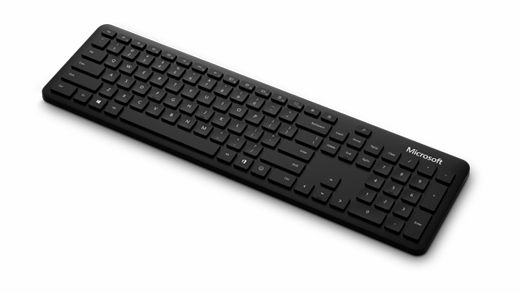In today’s fast-paced digital world, convenience and efficiency are key. And what better way to enhance your productivity than by connecting your Microsoft wireless keyboard seamlessly? Whether you’re a tech-savvy individual or someone new to the world of wireless devices, this guide will walk you through the simple steps to connect your Microsoft wireless keyboard in no time.
Imagine the freedom of a clutter-free workspace, the ease of typing from any comfortable position, and the joy of uninterrupted productivity. With Microsoft’s wireless keyboard, these possibilities become a reality. Gone are the days of being tethered to your desk by pesky cables. Now, you can experience the convenience of a wireless connection, providing you with the flexibility to work wherever and however you desire.
In this guide, we will explore the step-by-step process to connect your Microsoft wireless keyboard effortlessly. From preparing your keyboard for pairing to troubleshooting any potential connection issues, we’ve got you covered. So, let’s dive in and unlock the full potential of your Microsoft wireless keyboard!
- Ensure that the keyboard has batteries and is turned on.
- Open the Bluetooth settings on your device.
- Press and hold the Bluetooth button on the keyboard until the pairing light starts flashing.
- Select the keyboard from the list of available devices on your device’s Bluetooth settings.
- Follow the on-screen instructions to complete the pairing process.

How to Connect a Microsoft Wireless Keyboard
In today’s fast-paced world, having a reliable and efficient keyboard is crucial for productivity. Microsoft offers a range of wireless keyboards that provide convenience and comfort to users. If you have recently purchased a Microsoft wireless keyboard and are unsure about how to connect it to your computer, this step-by-step guide will walk you through the process. By following these instructions, you can have your Microsoft wireless keyboard up and running in no time!
Step 1: Gather the Necessary Equipment
Before you begin connecting your Microsoft wireless keyboard, ensure that you have all the necessary equipment readily available. You will need the following:
- A Microsoft wireless keyboard
- A compatible computer or device
- Two AAA batteries
Make sure that the batteries are fresh and have enough power to establish a connection. Having everything prepared will help streamline the setup process.
Step 2: Prepare the Keyboard
Now that you have gathered the required equipment, it’s time to prepare the keyboard for connection. Follow these steps:
- Remove the battery cover located on the underside of the keyboard.
- Insert the two AAA batteries into the designated slots, ensuring the correct polarity.
- Replace the battery cover securely.
Properly inserting the batteries will ensure that your keyboard has the necessary power to establish a wireless connection with your computer.
Step 3: Activate Bluetooth on Your Computer
In order to connect your Microsoft wireless keyboard to your computer, you will need to activate Bluetooth. Follow these instructions based on your operating system:
Windows:
- Click on the Start menu and select “Settings.”
- In the Settings window, click on “Devices.”
- From the left-hand menu, select “Bluetooth & other devices.”
- Toggle the Bluetooth switch to the “On” position.
Mac:
- Click on the Apple menu and select “System Preferences.”
- In the System Preferences window, click on “Bluetooth.”
- Ensure that the Bluetooth option is enabled.
Activating Bluetooth on your computer will allow it to detect and establish a connection with your Microsoft wireless keyboard.
Step 4: Pair the Keyboard with Your Computer
Now that your keyboard is prepared, and Bluetooth is activated on your computer, it’s time to pair the two devices together. Follow these steps:
- Press the “Connect” button on the underside of the keyboard. This will initiate the pairing mode.
- On your computer, navigate to the Bluetooth settings.
- Click on the option to add a new device.
- Your computer should detect the Microsoft wireless keyboard. Select it from the list of available devices.
- Follow any additional prompts to complete the pairing process.
Once the pairing process is complete, your Microsoft wireless keyboard should be successfully connected to your computer. You can now start using it to enhance your productivity and enjoy the convenience of a wireless setup.
Step 5: Test the Connection
After successfully connecting your Microsoft wireless keyboard, it is recommended to test the connection to ensure everything is functioning properly. Simply type on the keyboard and verify that the characters appear on your computer screen. If any issues arise, refer to the keyboard’s user manual or troubleshoot using Microsoft’s support resources.
Step 6: Customize Keyboard Settings (Optional)
Depending on your preferences, you may want to customize certain settings on your Microsoft wireless keyboard. This could include adjusting the key repeat rate, modifying shortcut keys, or assigning specific functions to certain keys. To do this, refer to the keyboard’s user manual or visit Microsoft’s official website for detailed instructions on how to customize your keyboard settings.
Step 7: Enjoy Your Wireless Keyboard
Congratulations! You have successfully connected your Microsoft wireless keyboard to your computer. Now, you can enjoy the freedom and convenience of a wireless setup, allowing you to work efficiently and comfortably. Remember to keep the batteries charged and replace them when necessary to ensure uninterrupted usage of your Microsoft wireless keyboard.
Frequently Asked Questions
Here are some common questions about how to connect a Microsoft wireless keyboard.
Question 1: How do I connect my Microsoft wireless keyboard to my computer?
To connect your Microsoft wireless keyboard to your computer, follow these steps:
1. Insert the batteries into the keyboard and make sure they are properly installed.
2. Turn on your computer and ensure that Bluetooth is enabled.
3. Press the pairing button on the bottom of the keyboard. The exact location of the pairing button may vary depending on the model of your keyboard.
4. On your computer, go to the Bluetooth settings and search for available devices.
5. Select the Microsoft wireless keyboard from the list of available devices and click on “Pair” or “Connect”.
Your computer will then connect to the wireless keyboard, and you should be able to use it without any issues.
Question 2: Can I connect my Microsoft wireless keyboard to multiple devices?
Yes, you can connect your Microsoft wireless keyboard to multiple devices, but it depends on the specific model of the keyboard. Some Microsoft wireless keyboards support pairing with multiple devices, while others are designed to be connected to a single device at a time.
If your keyboard supports multiple devices, you can usually switch between them by pressing a specific key combination. Refer to the user manual or the documentation that came with your keyboard to find the instructions on how to connect to multiple devices and switch between them.
Question 3: What should I do if my Microsoft wireless keyboard is not connecting to my computer?
If your Microsoft wireless keyboard is not connecting to your computer, try the following troubleshooting steps:
1. Ensure that the batteries in the keyboard are not depleted. Replace them if necessary.
2. Check if Bluetooth is enabled on your computer and make sure it is discoverable.
3. Restart your computer and try connecting the keyboard again.
4. Move the keyboard closer to the computer to ensure that the wireless signal is strong enough for a connection.
5. If none of the above steps work, consult the user manual or visit the Microsoft support website for further assistance.
Question 4: Can I use a Microsoft wireless keyboard with a non-Microsoft computer?
Yes, you can use a Microsoft wireless keyboard with a non-Microsoft computer. Microsoft wireless keyboards are designed to be compatible with various operating systems, including Windows, macOS, and Linux. However, some advanced features of the keyboard may not be fully supported on non-Microsoft operating systems.
To connect the keyboard to a non-Microsoft computer, follow the same steps mentioned earlier for connecting to a computer. Ensure that Bluetooth is enabled on your computer and search for available devices. Select the Microsoft wireless keyboard from the list and pair it with your computer.
Question 5: How do I disconnect my Microsoft wireless keyboard from a computer?
To disconnect your Microsoft wireless keyboard from a computer, follow these steps:
1. Go to the Bluetooth settings on your computer.
2. Locate the connected devices list or the paired devices list.
3. Find the entry for your Microsoft wireless keyboard and click on the option to disconnect or unpair.
4. Your computer will then disconnect from the wireless keyboard, and it will no longer be connected or recognized by your computer.
If you want to connect the keyboard to a different computer or device, you will need to follow the pairing process again.
In conclusion, connecting a Microsoft wireless keyboard is a simple process that can greatly enhance your computing experience. By following the steps outlined in this guide, you can easily establish a seamless connection between your keyboard and your device, allowing for effortless typing and navigation. Whether you are using a desktop computer, a laptop, or a tablet, the convenience and flexibility of a wireless keyboard cannot be overstated.
Not only does a wireless keyboard eliminate the clutter of cables, but it also provides the freedom to work from a distance, increasing both comfort and productivity. With its sleek design and reliable performance, a Microsoft wireless keyboard is a valuable addition to any modern setup. So, why wait? Take advantage of this technology and enjoy the convenience of a wireless connection today. With just a few simple steps, you can unlock a whole new level of efficiency and ease in your computing tasks.

